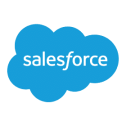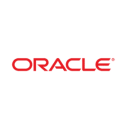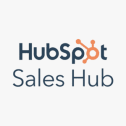CPQ Software for Enterprise Businesses
What is CPQ for Enterprise?
CPQ (configure, price, quote) for enterprise companies is designed to address the sophisticated and expansive needs of large-scale organizations. Enterprises deal with complex product lines, global markets, and multifaceted sales channels, so they need a CPQ solution that is both advanced and highly adaptable.
Enterprise CPQ software is specifically engineered for:
- Large user bases with varying roles across several business units
- Advanced product configurations to support complex product portfolios with numerous variants and customizations
- Sophisticated pricing models, with each product having a mix of fixed and variable pricing components
- Global reach through multiple languages, currencies, and localization requirements, plus regional compliance and tax regulations
- Enterprise-level integrations for ERP (enterprise resource planning), CRM (customer relationship management), and SCM (supply chain management) systems
- Complex billing for highly configurable products, subscription services, usage-based models, and revenue recognition
- Sales channel support for direct sales, indirect channels (distributors and dealers), ecommerce, and partner networks
- Analytics and reporting for tracking performance, forecasting models, and identifying opportunities for growth
Customization and extensibility are the two words that come to mind when we discuss CPQ for enterprise. When it comes to CPQ software, the world’s largest companies need custom software, cutting-edge, industry-specialized security infrastructure, extensive data for predictive modeling, and adaptable systems built for their unique needs. And, they have the money to pay for it.
CPQ Solutions for Enterprise Organizations
DealHub CPQ Overview
Salesforce CPQ Overview
Oracle CPQ Overview
Epicor CPQ Overview
HubSpot CPQ Overview
Conga CPQ Overview
IBM CPQ Overview
Sales Quoting Challenges in Enterprise Organizations
We can group businesses into the small, mid-market, or enterprise category based on three criteria: revenue, headcount, and location.
- Enterprise companies generally do more than $1 billion in revenue.
- They have 1,000+ employees.
- They have offices and conduct business around the world.
Think: Google, Salesforce, General Electric, and Coca-Cola.
The world’s largest multinational companies account for a tiny proportion of businesses. According to data from NAICS, only 0.1% of businesses have >1,000 employees. And just 0.02% earn more than $1 billion in revenue. But their sheer size means they account for the majority of total revenue generated for the economy.
Enterprise companies are well-oiled machines. They have established systems and processes they don’t normally veer away from. This makes their challenges completely different from those of small or even mid-market organizations.
Rigidity
Money isn’t an issue for large enterprises. They have plenty of cash to invest in technology, and data shows the typical large company uses 40-60 apps per department.
The issue is, bureaucracy and rigid processes make it extremely difficult and time-consuming to implement change. They’re simply less agile than smaller organizations.
When it comes to quoting, this is a huge problem. If there’s a bottleneck in their sales process, the number of variables and amount of high-level decisions that go into implementing change mean it’ll take months to agree on the next steps toward a solution.
Complex Products and Services
Depending on the nature of their product/service offering, complexity could mean a few different things:
- Custom software and quote-based subscription pricing for enterprise SaaS vendors
- Thousands of line items and SKUs for industrial manufacturers
- Complicated, one-of-a-kind, engineer-to-order products in the automotive, aerospace, or medical device industries
- Tailored projects with multiple delivery phases for professional services organizations
- Multicurrency and localization for global distribution
Regardless of the exact scenario, complexity comes into play because enterprises have a wide variety of offerings and their customers’ needs differ from one to the next. So, for quoting to work, thousands of different variables have to work in tandem to ensure accurate quotes that are both possible to execute and financially feasible for the business. And it all has to happen automatically.
Product Visualization
Contract manufacturers in industries like automotive, healthcare and medical devices, and HVAC manufacturing and distribution produce products for each customer that they won’t produce for another. When you’re a vendor for an innovative medical device or car manufacturer, you create products that are not only customized but also entirely unique.
It’s impossible to communicate these things (and generate a sales quote for them) without visuals. Non-technical buyers won’t understand a thing you’re saying, and technical buyers will need to see technical specs and measurements.
So, enterprise quoting in industries like these necessitates CAD automation and 3D visualization you can automatically share with your engineering team before production begins.
Pricing
Pricing is a lot more tricky at the enterprise level. Price optimization isn’t as simple as setting a price that reflects your customers’ perceived value, your competition, and your operating costs.
While these factors come into play, enterprise pricing is normally quote-based. An enterprise buyer won’t see a fixed-rate price on your website or in your catalog like every other buyer would. They’ll have to book a call with sales to talk more in-depth.
This means there’s a greater importance on what’s feasible for your business. When quoting each enterprise customer, you have to do a cost-benefit analysis to determine whether it’s possible to offer what they’re requesting and if you can accomplish this profitably.
Without a highly specialized quoting tool that runs these calculations and scenarios in the background, they’re impossible to figure out.
Data Synchronization
According to Ataccama’s Enterprise Data Readiness Report — a survey of 1000+ global execs and business software users from mid- to large-sized enterprises — found that 79% of execs and 74% of business users face problems with data quality.
Keyword: data quality. Not data accessibility. Not data volume. Not data velocity.
In fact, the typical reason for data quality issues is there’s too much of it. If critical data points are siloed in one software tool or database, the entire picture of your sales, operations, and financial health will be off.
The average company has over 2,000 silos. For enterprise organizations with dozens of departments and subsidiaries, the figure is normally a lot higher.
In the context of quoting, this means the figures that calculate your pricing and what you can promise customers will be off. It also means your sales data will be less accurate, since CPQ is the platform that handles your business transactions.
Integrations
Normally, integration (or a lack thereof) is to blame for data problems. In addition to creating automation workflows for your quoting process, integration is what ensures all your sales, customer, and product data flows between systems throughout the entire sales process.
Silos in your tech stack are problematic. Of course, it’s impossible to be completely integrated, but you can do a lot to make sure data gets where it needs to go without manual intervention.
Integration is at its most complicated for enterprise organizations because they tend to have highly customized IT infrastructure, custom-coded software, or multiple systems handling one essential process. CPQ implementation is the perfect example — it can take upwards of 6 months to fully integrate a new CPQ tool into your sales stack.
How CPQ Unlocks Enterprise Revenue Potential
Shortens Sales Cycle
The typical enterprise deal takes between 6 and 12 months to close, though it isn’t uncommon for them to last well into the next year. The more complex the product, the longer the lead time.
CPQ automates manual processes that slow down the sales cycle.
- CPQ-CRM integration eliminates the need to reenter customer information on quotes or update CRM every time a quote changes.
- Automated email reminders and follow-ups get sent when customers don’t respond to quotes, cutting time out of the already-long sales process.
- Product rules and guided selling move your most experienced reps faster through the experience while ensuring new reps don’t miss critical details.
- Approval workflows escalate the deal to a member of your team for review and approval when pricing gets too complex.
- CAD automation eliminates the need for vendors of highly configurable products to switch between tools to deliver quotes or pass off projects to engineering.
- Enterprise CPQ’s clause library helps sales reps turn quotes into contracts in a matter of minutes, instead of the hours typically required.
From opportunity to contract execution, there will always be heavy reliance on human involvement. But CPQ eliminates the friction between human touchpoints and takes care of the clerical error-prone work that adds weeks to your deal cycle.
Increases Quote Accuracy
CPQ auto-populates sales documents with accurate customer data, configured pricing, and contract terms. It also applies mathematical rules to a quote, ensuring the final price is always correct.
Although there’s still the potential for human error (e.g., in approving a quote), CPQ practically eliminates 100% of the mistakes that come with manual data entry. All in all, it’s proven to eliminate at least 40% of all human error in the quote-to-cash process.
Enables Selling Custom-Built Solutions
Enterprise CPQ systems use a combination of predetermined product rules, integrated product/customer data from other systems, and artificial intelligence to:
- Score leads
- Calculate prices with maximum profit margins
- Model what-if scenarios for complex pricing
- Build 2D and 3D models of bespoke products
- Identify upsell and cross-sell opportunities
- Assess the feasibility of a product configuration
- Apply pricing rules and discount structures
In other words, they’re designed to quote products that can’t be sold out of a catalog or from a fixed price list.
Supports High-Value Deals
Enterprise sales are primarily relationship-driven. A huge part of relationships is transparency — can your prospects trust you to (a) turn things around quickly and (b) make good on what you promise?
With an enterprise CPQ system, the answer to both questions is yes. You can get sales documents back to your buyers as quickly as possible, and a high degree of accuracy ensures your buyers know they’re getting a good deal.
When sellers aren’t constantly keeping their prospects waiting, it’s easier to form long-lasting relationships that eventually get those deals closed.
Fully Adapts to Your Business Workflows
Enterprise CPQ is built to be extensible. Since enterprise sales and operations teams span multiple business units across state and country borders, the amount of software infrastructure can be overwhelming.
Enterprise CPQ usually connects to…
- product catalogs
- CRM systems
- ecommerce systems
- billing and subscription management tools
- ERP and finance software
- project management tools
- customer self-service portals
- warranty and service systems
- legacy software
- databases
…to create custom automations for your operations, specifically.
A business’s tech stack plays a huge role in its ability to differentiate and create a sustained competitive advantage. CPQ for enterprise organizations plays a big role in that by driving sales efficiency, maximizing profits on every deal, and enabling reps to build relationships with their customers more seamlessly.
5 Tips for Implementing CPQ in Enterprises
Enterprise CPQ implementation is a massive undertaking. It requires an overhaul of your current system, months of data migration, and changes to your current sales workflows (which, as mentioned, can be quite rigid).
For a smooth implementation process, use the following tips:
1. Conduct a cost-benefit analysis before committing.
Market data shows us 83% of sales professionals are using some form of CPQ. Enterprise companies normally aren’t using spreadsheets and Google Docs — they’re already working with a CPQ vendor, whether it’s the ideal one or not.
Enterprise-scale infrastructure is a lot more resistant to change, so you have to consider how switching vendors will impact your entire organization.
- How the tool change your sales team’s daily life
- How it’ll impact your billing and subscription management processes
- Downtime and operational interruptions
- Employee onboarding time and user adoption
- Native integrations vs. investing in additional integration services
- The true cost of migrating your data into this new tool, accounting for data loss and downtime
- Your ongoing maintenance costs and how they stack up against the benefits
Usually, switching CPQ vendors is a good idea if your current solution doesn’t fit into your enterprise sales strategy, or its features aren’t strong enough to handle your sales processes as you scale. This is especially common among newer enterprises.
2. Choose a vendor based on your workflows and current tech stack.
We can’t stress this enough. Some platforms simply won’t work for your specific requirements. You’ll save heaps of time during procurement if you narrow it down right away (most of this info is available on the vendor’s website).
For example:
- PROS CPQ is a solid quoting tool for manufacturers that need AI, predictive modeling, and 3D configuration.
- DealHub CPQ works well for enterprise SaaS companies that need a fully managed quoting, contract management, and subscription management platform.
- Salesforce CPQ is perfect if you use Salesforce CRM, already have custom Salesforce infrastructure, and want to work in the same UI.
The most important tools to consider for integration capabilities are CRM, ERP, and billing. Others include collaboration software (e.g., Slack), document management systems, sales automation, financial modeling, and revenue intelligence tools (e.g., Gong).
3. Align every department in your implementation initiative.
Even if you’re having your vendor or a licensed third-party consultant handle the process for you, you still need to align everyone whose input is valuable.
- Sales
- Product
- IT/Ops
- Finance
- Marketing
- Customer Success
- Legal
Keep leaders in the loop during implementation and testing. And engage end users from each of these departments to gauge their experiences before, during, and after the rollout.
4. Be thorough when creating rules, roles, and workflows.
This is one of the most important steps in the implementation process. It’s where you’ll tell the system what’s allowed, what isn’t, and when to escalate a deal to a leader for approval.
- Rules configuration
- User roles and permissions
- Product selection
- Workflow configuration
- Templates for customer-facing documentation
You’ll probably have thousands of different product configurations and pricing rules. And you’ll need to build a clause and template library for all your different localities, payment terms, and contract types.
During implementation, you’ll have to test every product across dozens of sales scenarios to ensure every configuration is viable and the contracting process runs smoothly and accurately.
5. Invest heavily in training, deployment, and change management.
Your six-figure, months-long investment will be worth nothing if your team members have difficulty using the new CPQ software.
Assuming you’ve taken care to test the system every step of the way (and chosen a system that suits your workflow nicely), you shouldn’t have too much of an issue here.
However, you should still plan for initial hiccups and resistance to change.
- Train the trainer programs
- Employee training manuals and documentation
- Ongoing support
- User adoption benchmarks
- Communication with the entire team at every stage of implementation
After deployment, you’ll be able to measure your results against your pre-deployment goals. Keep track of your new win rate, sales cycle length, and contract accuracy to understand the success of your implementation.
You can also check out our comprehensive guide to CPQ implementation for an in-depth look at the whole process.
FAQs
Every industry that deals with customer-facing sales (whether it’s face-to-face or virtual) uses CPQ in some form. The industries generating the most revenue for CPQ vendors are: Manufacturing, Energy & Utilities, Telecommunications, Retail, Healthcare and Medical Devices, Software-as-a-Service (Saas), and Financial Services.
Companies need CPQ because sending customers accurate price quotes without it is impossible. CPQ software is a cloud-based tool that guides sales reps through the quoting process, provides accurate pricing information, and ensures compliance with company policies. It also speeds up the sales cycle and improves overall customer experience.

Andrew is a professional copywriter with expertise in creating content focused on business-to-business (B2B) software. He conducts research and produces articles that provide valuable insights and information to his readers.







